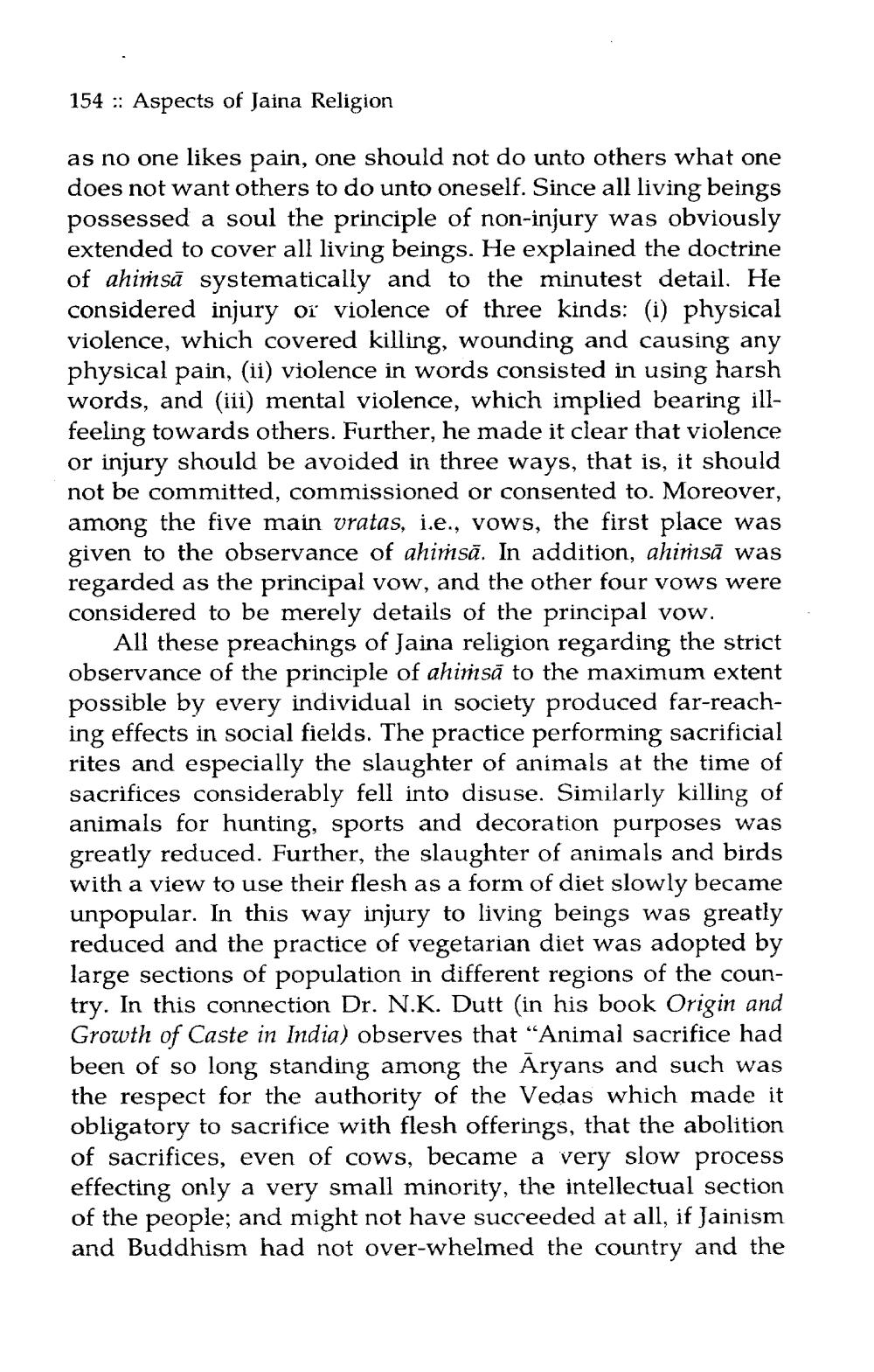________________
154 Aspects of Jaina Religion
as no one likes pain, one should not do unto others what one does not want others to do unto oneself. Since all living beings possessed a soul the principle of non-injury was obviously extended to cover all living beings. He explained the doctrine of ahimsa systematically and to the minutest detail. He considered injury or violence of three kinds: (i) physical violence, which covered killing, wounding and causing any physical pain, (ii) violence in words consisted in using harsh words, and (iii) mental violence, which implied bearing illfeeling towards others. Further, he made it clear that violence or injury should be avoided in three ways, that is, it should not be committed, commissioned or consented to. Moreover, among the five main vratas, i.e., vows, the first place was given to the observance of ahimsa. In addition, ahimsa was regarded as the principal vow, and the other four vows were considered to be merely details of the principal vow.
All these preachings of Jaina religion regarding the strict observance of the principle of ahimsa to the maximum extent possible by every individual in society produced far-reaching effects in social fields. The practice performing sacrificial rites and especially the slaughter of animals at the time of sacrifices considerably fell into disuse. Similarly killing of animals for hunting, sports and decoration purposes was greatly reduced. Further, the slaughter of animals and birds with a view to use their flesh as a form of diet slowly became unpopular. In this way injury to living beings was greatly reduced and the practice of vegetarian diet was adopted by large sections of population in different regions of the country. In this connection Dr. N.K. Dutt (in his book Origin and Growth of Caste in India) observes that "Animal sacrifice had been of so long standing among the Aryans and such was the respect for the authority of the Vedas which made it obligatory to sacrifice with flesh offerings, that the abolition of sacrifices, even of cows, became a very slow process effecting only a very small minority, the intellectual section of the people; and might not have succeeded at all, if Jainism and Buddhism had not over-whelmed the country and the




